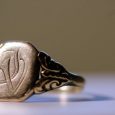
Around 80 percent of Americans do not eat the needed servings of fruits and vegetables. Americans eat too many refined grains and too much sugar.
Are you meeting your body’s dietary needs? Do you know what you need to eat to stay healthy? Keep reading to see how you can get your dietary requirements.
Eating a Balanced Diet
Do you know what is included in a balanced diet? A balanced diet gives your body the daily nutrients to function properly and stay healthy.
Here is what you need to eat each day:
- Lean proteins
- Whole grains
- Fresh fruits
- Fresh vegetables
- Nuts
- Legumes
Each of these items has different vitamins and nutrients, so you need this variety. This page outlines the benefits of meal plans with healthy, personalized meals for you to eat a balanced diet.
Get the Right Plate
The USDA put together this ChooseMyPlate initiative to help you figure out how to meet your dietary needs. Here’s what your plate should look like to get all of these categories needed for a healthy diet:
- Fill half of your plate with vegetables and fruits
- Add dairy to the side
- Fill a quarter of your plate with grains
- Add a quarter of protein foods to finish your plate
Everyone has different needs, but this gives you an idea of how you can daily minerals and vitamins.
What to Choose
When you are deciding what foods to eat, you want to reach for the ones packed with the most vitamins.
Vegetables
For vegetables, choose dark leafy greens like:
- Kale
- Spinach
- Green beans
- Broccoli
- Swiss chard
- Cabbage
- Collard greens
These have some of the most powerful nutrients and antioxidants.
Fruits
Fruits are also nutritious and have natural sugars to satisfy your sweet tooth. They won’t cause a sugar spike, so eat fruit, like apples, oranges, or grapes, for dessert or a snack.
Grains
When looking for grains, choose whole grain options. White flour has little nutritional value. Try eating oats, brown rice, and whole wheat bread and pasta.
Protein
Your body needs protein for muscle development, healing, and other functions. You can get this protein from animal proteins like:
- Fish (salmon, mackerel, sardines, and other oily fish)
- Poultry such as turkey and chicken
- Red meat like beef
Processed meats like hot dogs have a lot of salt and other preservatives. You should also limit red meat.
You can also get protein from plant sources, which are also good sources of fiber. Here are some ideas for plant protein:
- Walnuts
- Sunflower seeds
- Peas
- Beans
- Lentils
- Almonds
Soy-based products, tofu, and tempeh are also great alternatives to meat.
Dairy
Dairy has essential nutrients like vitamin D, calcium, and protein. Make sure you reach for the reduced-fat options.
There are options for dairy alternatives such as products made from oats, soy, flaxseed, almonds, cashews, and coconut. These products are fortified with calcium and other nutrients, but you have to read the label for added sugars.
Fats and Oils
Your body needs some fat for cell health and energy. There are some fats that are considered healthy fats like extra virgin olive oil. You can also get fats from fish and vegetable oils.
Avoid trans fats found in premade food. Deep-fried foods also have little nutritional value and are filled with unhealthy fats.
You can eat a limited amount of fats in dairy like cheese, butter, and heavy cream.
Meet Your Dietary Needs This Week
Now you know how to meet your dietary needs. Half of your plate should consist of fruits and vegetables. Eat healthier proteins and fats, and avoid trans fats and prepacked food.
Check out our Healthy Foods section to help you eat a healthy diet.




